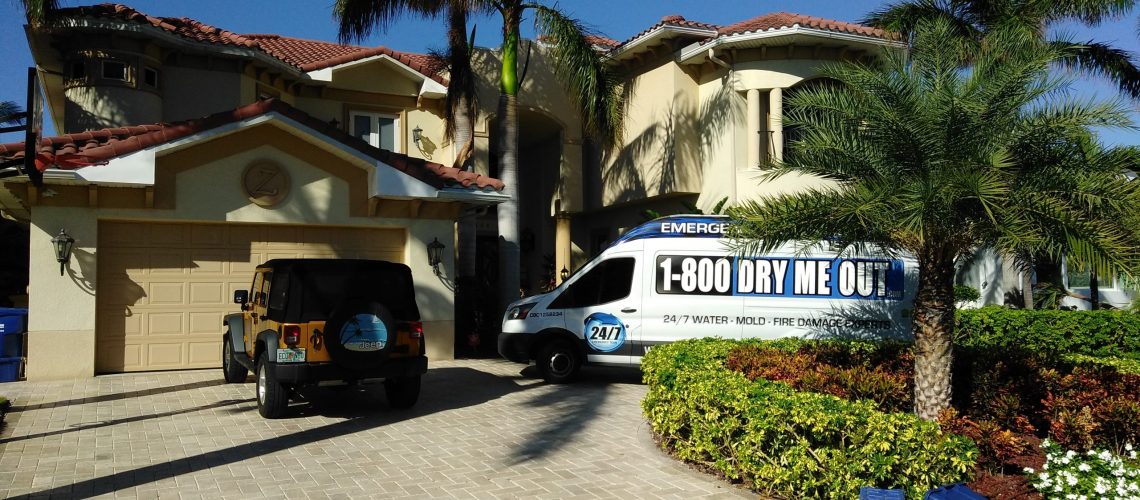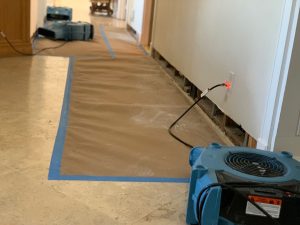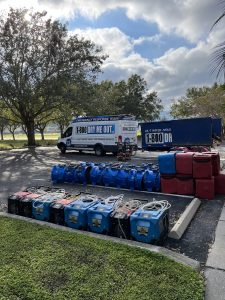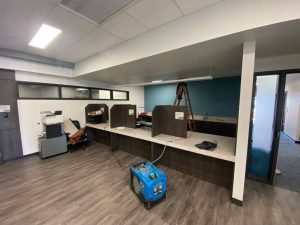Water damage can hit when you least expect it—whether from a busted pipe, severe weather, or even a leaking appliance. And while it’s natural to feel overwhelmed in the moment, the decisions you make immediately after water damage can significantly affect your property’s condition, safety, and long-term repair costs.
At Dry Me Out, we’ve helped countless home and business owners through stressful and messy water-related disasters. Along the way, we’ve noticed a pattern: property owners often make the same avoidable mistakes right after the damage occurs. These missteps can delay recovery, worsen structural damage, and in some cases, cause serious health risks.
In this article, we’re breaking down the most common mistakes people make after water damage—and more importantly, how to avoid them. Whether you’re dealing with a minor leak or a full-blown flood, this guide will help you make smart, safe, and cost-effective decisions moving forward.
Key Takeaways
- Acting quickly is critical to reducing the impact of water damage.
- Avoiding professional help often leads to hidden mold and long-term structural issues.
- Not documenting the damage can hurt your chances of a successful insurance claim.
- DIY drying techniques are often not enough to prevent moisture buildup.
- Electrical hazards, contaminated water, and mold risks should be taken seriously.
- Always contact a licensed water restoration professional to handle the cleanup properly.
1. Waiting Too Long to Act
One of the most common (and costly) mistakes property owners make is not jumping into action right away. Whether it’s denial, panic, or just not knowing what to do first, waiting even a few hours after water intrusion can make a big difference.
Why it’s a problem:
Water spreads quickly, seeping into flooring, drywall, insulation, and structural materials with lightning speed. The longer it sits, the more extensive the water damage becomes. Within 24 to 48 hours, mold can begin to grow, making the situation even more dangerous and expensive.
What to do instead:
As soon as you discover a water issue, shut off the water source if possible, document the damage, and call a certified water removal specialist like Dry Me Out. Acting fast can save you thousands in repair costs and reduce health hazards.
2. Not Calling a Professional Water Damage Restoration Company
Many homeowners think they can handle water damage cleanup themselves, especially if the visible water looks minimal. But what seems small on the surface often hides a much larger problem underneath.
Why it’s a problem:
DIY water damage cleanup usually doesn’t involve the right tools or knowledge to detect moisture inside walls, under floors, or in insulation. Without proper drying and treatment, moisture lingers and creates the perfect environment for mold and structural deterioration.
What to do instead:
Call a trusted company like Dry Me Out. We have the professional-grade equipment and the experience to detect and eliminate hidden moisture. We also know how to safely dispose of contaminated materials and follow industry best practices for water restoration.
3. Failing to Document the Damage
In the chaos of dealing with a flooded home or office, it’s easy to forget to take photos or videos of the damage. But when it comes time to file a claim with your insurance company, missing documentation can cause serious problems.
Why it’s a problem:
If you don’t have clear evidence of the extent of your water damage, your insurance adjuster might not approve your full claim. That means you could end up paying for repairs out of pocket.
What to do instead:
Before any cleanup begins, take photos and videos of all of the affected areas, including walls, flooring, ceilings, furniture, and personal items. Keep a record of the time and date of the incident, and make a list of damaged property. Dry Me Out can also assist in documenting the damage properly for your claim.
4. Turning On Electrical Appliances or Systems
After water damage, your instinct might be to turn on fans, lights, or other appliances to help dry things out. But this can be extremely dangerous if the water has reached electrical outlets, cords, or systems.
Why it’s a problem:
Water and electricity do not mix. Turning on power in a flooded area can result in electrical shock, fires, or permanent damage to your system.
What to do instead:
Avoid using any electrical devices until a licensed electrician or water damage restoration professional confirms it’s safe. If you suspect that water has reached your electrical system, shut off the power at the main breaker, but only if it’s safe to do so.
5. Ignoring Contaminated Water Risks
Not all water damage is created equal. Floodwater, sewage backups, or stormwater can contain harmful bacteria, chemicals, and other contaminants that pose serious health risks.
Why it’s a problem:
Handling Category 2 or Category 3 water (gray water or black water) without proper protection or training can expose you to diseases and toxic substances.
What to do instead:
Always assume unknown water sources may be contaminated. Don’t touch or attempt to clean up this type of water yourself. Call a professional like Dry Me Out, who has the proper safety gear and disinfecting solutions to handle contaminated water safely.
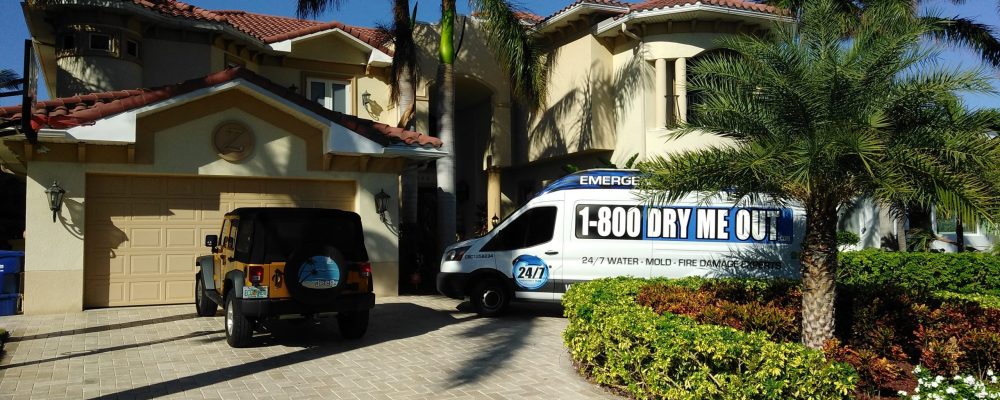
6. Throwing Away Wet Items Too Soon
It’s understandable to want to start tossing out wet belongings, especially if they seem beyond the point of no return, however, getting rid of items too quickly can backfire in several ways.
Why it’s a problem:
You might be discarding items that could be salvaged, or worse, throwing out items before your insurance adjuster has had a chance to review them, which can reduce your reimbursement.
What to do instead:
Set wet belongings aside and wait for a professional assessment. This can help you mitigate your losses and keep track of everything you need for maximum insurance coverage.
7. Using Household Fans Instead of Professional Drying Equipment
Many property owners try to dry out water damage with ceiling fans or store-bought air circulators. While this might work for small spills, it’s not enough for a serious water intrusion.
Why it’s a problem:
Household fans can’t create the airflow and humidity control necessary to properly dry building materials and hidden moisture pockets. In fact, leaving moisture behind is one of the fastest ways to encourage mold growth.
What to do instead:
Let restoration professionals bring in industrial air movers and dehumidifiers. At Dry Me Out, we monitor the drying process from start to finish using moisture detection tools to ensure that every bit of moisture is taken care of.
8. Overlooking Hidden Moisture
Even if the carpet feels dry or there’s no standing water, moisture can hide beneath the surface. That’s why it’s crucial to look beyond the obvious indicators.
Why it’s a problem:
Trapped water can lead to mold, rot, and even structural failure if left untreated. It may take days or weeks for signs to show up. By then, repairs will be more expensive and time-consuming.
What to do instead:
Professional water damage restoration companies like Dry Me Out perform detailed inspections with thermal imaging and moisture meters to detect water behind walls, under flooring, and in other hidden places.
9. Assuming Insurance Will Cover Everything
Another common mistake is assuming that homeowners or commercial property insurance will automatically cover all aspects of the damage. Unfortunately, that’s not always the case.
Why it’s a problem:
Many policies have exclusions for flood damage, slow leaks, or mold growth. If you’re not clear on what’s covered, you could be left with unexpected bills.
What to do instead:
Review your insurance policy carefully and ask your provider for clarification. It’s also wise to work with a company like Dry Me Out that understands the insurance claims process and can help guide you through it.
10. Skipping the Final Inspection
Even after cleanup, many people fail to go through the final inspection to ensure the space is completely dry and safe.
Why it’s a problem:
Missed moisture or improperly repaired damage can cause problems down the road, including mold growth and weakened structures.
What to do instead:
Always follow through with a post-restoration inspection. At Dry Me Out, we use professional moisture testing tools and visual assessments to confirm that every part of your property is thoroughly dry and restored.
Don’t Let Water Damage Turn Into a Bigger Problem
Water damage is stressful enough without making it worse through avoidable mistakes. The good news is, you don’t have to face it alone.
At Dry Me Out, we’ve built our reputation on fast, effective, and compassionate service. Our team of certified technicians is trained to handle all aspects of water removal, structural drying, and mold prevention. From the first phone call to the final inspection, we’re here to make your recovery as smooth as possible.
Call Dry Me Out for Professional Water Restoration Help
If you’re dealing with water damage, don’t take any chances by tackling the issue alone. Protect your home, your health, and your peace of mind by calling the experts at Dry Me Out.
We’ll respond quickly, assess the damage thoroughly, and get your property back to a clean, dry, and safe condition. Let us handle the hard work so you can focus on what matters most.
Don’t wait until it’s too late—contact Dry Me Out today for reliable, professional water damage restoration services.

